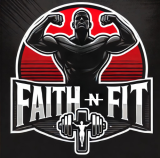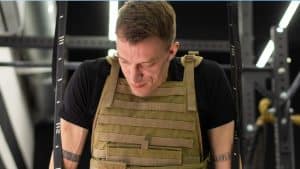Should you stop training when you are injured? How do you adapt your workout to joint soreness and injuries? If your knees, back, or shoulders are sore, you may wonder whether you should continue with your workouts. But, remember, anyone who exercises regularly and intensely will eventually suffer an injury.
But that doesn’t mean that you need to skip exercise altogether. On the contrary, exercising through your soreness can help speed up the healing process. So, keep training with adaptations to stay active and maintain your strength and fitness level.
Consult Physician –
The first step to adapting your workout for joint soreness and injuries is checking with your doctor to see if it is safe to exercise. If you have torn muscles or fractured bones, remaining active can exacerbate these issues. Your physician will probably advise you to take it easy on the heavyweights and limit your high-affected exercises. Once you are cleared to train, it’s time to plan your alternate approaches to fitness.
If you have a knee injury, focus on your core and upper body. Similarly, while recovering from an upper-body or shoulder injury, you can work on strengthening your core and legs. If you must avoid high-affected activities like running or jumping, find low-affected ways to maintain your cardiovascular fitness.
Exercises –
Swimming − Swimming is an excellent option for injured athletes. As water supports most of your body weight, there is little to no impact on your joints. Laps and sprints can provide an excellent cardiopulmonary workout while training your arms, core, and legs. Your entire body gets a great workout from swimming, and it should be your first choice as an alternate training program. However, it may not be the best option if you have a chest or shoulder injury until you reach your recovery rehabilitation phase.
Biking− Whether outdoors or indoors, biking provides a beneficial cardio workout. As it is a low-affected exercise, biking may also be a therapeutic way to rehabilitate your knee after injury. First, check the distance from the seat to the pedals to ensure that your legs are allowed their full range of motion. Then, when your body is ready for a challenge, increase the pedal resistance or bike “uphill” to enhance your intensity.
Rowing − Using a rowing machine is a great way to exercise your entire body through an injury. Start with light resistance to avoid aggravating any preexisting leg injury. If your upper body is damaged, the steady, circular motion shouldn’t put too much stress on your joints. When exercising through an injury, always start slowly.
The Last Word on How to Adapt a Workout to Avoid Injuries
Adapting Your Current Gym Workout − With proper planning, you can effectively replace or adjust your favorite exercises if you’ve suffered an injury. Instead, think of it as an opportunity to try new exercises. For example, if you can’t lift a barbell right now, perform bodyweight training or a military-style boot camp.While recovering from a knee injury that prevents squatting, use leg machines that don’t involve your knees. Similarly, to avoid aggravating back pain, you can temporarily engage in seated and lying bench training. There are ALWAYS ways to train around an injury through alternative fitness approaches or adapt to your current fitness program. Finally, don’t forget to warm up before working out and stretch after to prevent injury.
Related Articles
- Workout Principles – 7 Best Laws to Build Muscle
- 4 Quickest Ways to Get Rid of Muscle Soreness
- How Can CBD Help with Sore Muscles Recovery?
- Chest Workout – How to Build Massive Pecs Quickly
- BCAA’s Benefits – How They Affect a Bodybuilder’s Workout?
Subscribe now and get a 14-day free trial workout app for iPhone users.






